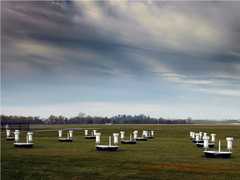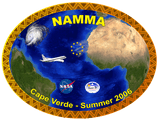The Sferics Timing and Ranging Network (STARNET) is a long-range lightning detection system spanning South America and the Atlantic Ocean. It uses Very Low Frequency (VLF) receivers to detect sferics from lightning strikes. It operates at 7-15 kHz and measures 130 sferics per second. STARNET has a location accuracy of 2 to 10 km in South America and about 20 km in the Atlantic Ocean.

Instrument Details
- Magnetic/Electric
- Earth Science > Atmosphere > Atmospheric Electricity > LightningEarth Science > Atmosphere > Atmospheric ElectricityEarth Science > Atmosphere > Weather Events > LightningEarth Science > Spectral/engineering > Radio Wave
- Full Column Profile
- < 1 second
- N/A
- 7-15 kHz
- Currently unavailble
Vasso Kotroni, Kostas Lagouvardos
Vasso Kotroni, Kostas Lagouvardos
Resolution Display Inc.
NASA
Currently unavailable
data center outside NASA
 Campaign Field Sites Stationary 73 Campaigns · 172 Instruments |  NASA African Monsoon Multidisciplinary Analyses 2006 Cape Verde Islands, Atlantic Ocean 1 Deployment · 22 Data Products
|